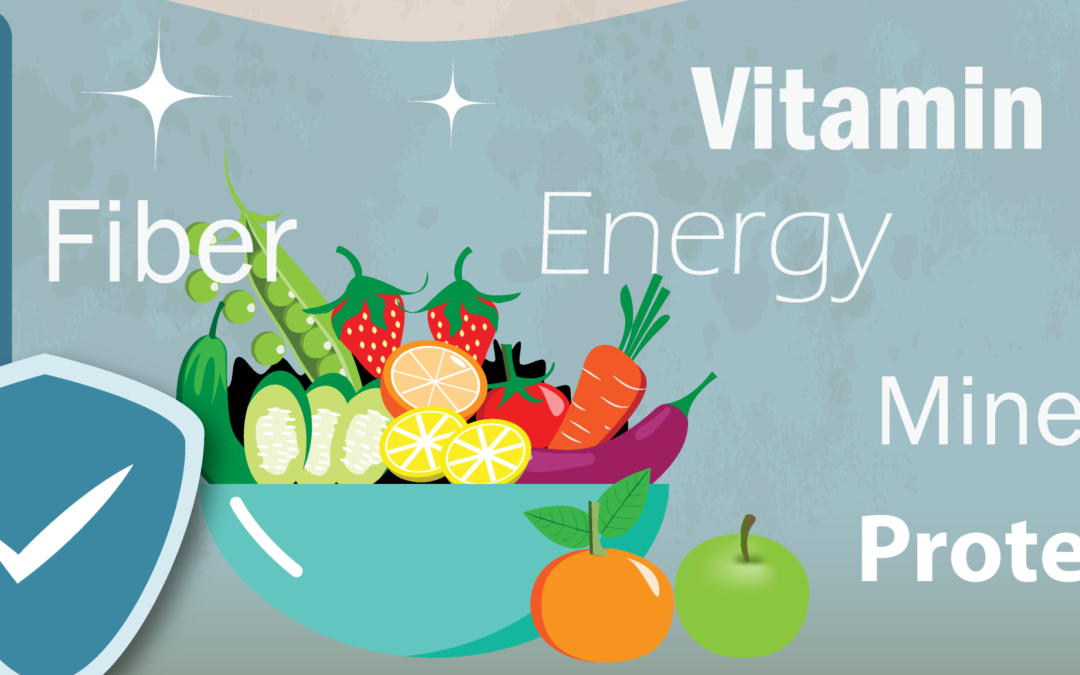Powerlink’s Blog

Which foods are a good source of protein in a senior’s diet to maintain muscle mass
As we age, our body goes through many changes, and one of the most significant changes is the loss of muscle mass. This loss of muscle mass is known as sarcopenia, affects many seniors. Sarcopenia can decrease mobility, strength, and overall quality of life. However, one way to combat sarcopenia is through a proper diet that includes enough protein.
Protein is an essential nutrient critical for maintaining and building muscle mass. As seniors age, their protein needs may increase, making it even more critical to ensure they get enough protein in their diet.
Why is protein essential for seniors?
Protein is essential for muscle health and maintenance and plays a role in many other bodily functions. One of the primary functions of protein is to provide the building blocks for muscle tissue. As we age, our bodies become less efficient at using protein to build and repair muscle tissue. This can lead to decreased muscle mass, strength, and function.
Seniors who consume enough protein in their diet can help slow down the loss of muscle mass, maintain their strength, and improve their overall quality of life. Additionally, protein can help with weight management, as it is more satiating than carbohydrates and fat, leading to a reduced appetite and a lower caloric intake.
Which foods are good sources of protein?
Many foods are good protein sources, and seniors should aim to include a variety of protein-rich foods in their diet. Some excellent sources of protein include:
Meat and poultry
Meat and poultry are excellent sources of protein. The best options include chicken, turkey, beef, and pork. It’s essential to choose lean cuts of meat, as these are lower in saturated fat and calories.
Fish and seafood
Fish and seafood are also great sources of protein. Fatty fish like salmon and tuna are particularly beneficial, as they are high in omega-3 fatty acids, which are beneficial for heart health.
Dairy products
Dairy products like milk, cheese, and yogurt are good sources of protein. They are also a good source of calcium, which is important for bone health.
Eggs
Eggs are a versatile and affordable source of protein. They can be boiled, scrambled, or fried, making them an easy addition to any meal.
Beans and legumes
Beans and legumes like chickpeas, lentils, and kidney beans are excellent protein sources. They are also a good source of fiber, which is beneficial for digestive health.
Nuts and seeds
Nuts and seeds like almonds, peanuts, and chia seeds are high in protein and healthy fats. They are also a good source of fiber and other essential nutrients.
How much protein do seniors need?
The amount of protein seniors need depends on their age, gender, and overall health. However, seniors should generally aim to consume at least 1.0-1.2 grams of protein per kilogram of body weight per day. For example, a senior weighing 70 kilograms (154 pounds) would need to consume 70-84 grams of protein daily.
It’s essential to spread protein intake evenly throughout the day, as the body can only use a certain amount of protein at once. Eating protein-rich foods at each meal can help ensure seniors meet their daily protein needs.
What are some tips for increasing protein intake?
For seniors struggling to meet their daily protein needs, there are many tips and tricks to increase protein intake. Some ideas include:
Start the day with a protein-rich breakfast.
Eggs, Greek yogurt, and protein smoothies are all great options for a protein-rich breakfast.
Snack on protein-rich foods.
Nuts, seeds, and protein bars are all great options for a quick and easy protein-rich snack.
Use protein powder.
Protein powder can be added to smoothies or used to make protein bars or protein balls for an easy and convenient way to increase protein intake.
Choose protein-rich snacks.
When choosing snacks, opt for options that are high in protein. For example, cheese sticks, hummus, or turkey slices are all great options.
Add protein to meals.
Adding protein to meals can help increase protein intake. For example, adding chicken or tofu to a stir-fry or beans to a salad can significantly increase the protein content of a meal.
Try new protein-rich foods.
Trying new foods can help seniors discover new protein-rich options that they may enjoy. For example, trying new types of fish or experimenting with plant-based protein sources like tempeh or seitan can help add variety to a senior’s diet.
Conclusion
In conclusion, protein is an essential nutrient for seniors, particularly when maintaining muscle mass. Seniors should aim to consume at least 1.0-1.2 grams of protein per kilogram of body weight per day and include a variety of protein-rich foods in their diet. By incorporating protein-rich foods into each meal and snack, seniors can help slow down the loss of muscle mass and improve their overall quality of life.

The Relationship Between Environmental Cleaning and Antibiotic Resistance
Antibiotic resistance is a significant public health issue globally, and there is a growing concern about the relationship between environmental cleaning and the development of antibiotic-resistant bacteria. Antibiotic-resistant bacteria are a type of bacteria that...

The role of nutrition in preventing or managing dementia discussing how a healthy diet can help
Dementia is a devastating condition affecting millions of people worldwide, causing a decline in cognitive function, memory loss, and changes in behavior. While there is currently no cure for dementia, research suggests that nutrition plays an important role in...
